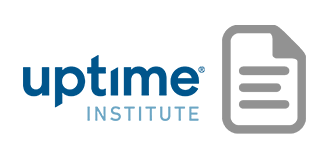
Uptime 宣布年度停电分析报告 2025
7th Annual Report analyzes data on IT and data center outages including causes, costs and consequences
NEW YORK, NY – 5 月 6, 2025 – Uptime Institute today announced the release of its 7th Annual Outage Analysis 2025 keynote report. The prevention of data center outages continues to be a strategic priority for data center owners and operators. Infrastructure equipment has improved, but the complexity of modern architectures and evolving external threats presents new risks that operators must actively manage.
For the fourth consecutive year, Uptime Intelligence Research suggests that overall outage frequency and the general level of reported severity continue to decline. However, cyber security incidents are on the rise and often have severe, lasting impacts.
“Outages overall have slowed down,” said Andy Lawrence, founding member and executive director, Uptime Intelligence. “Data center operators are facing a growing number of external risks beyond their control, including power grid constraints, extreme weather, network provider failures and third-party software issues. And despite a more volatile risk landscape, improvements are occurring.”
Uptime’s annual outage analysis is unique in the industry, and draws on multiple surveys, information supplied by Uptime Institute members and partners, and its database of publicly reported outages.
Key Findings Include:
- Outages are becoming less frequent and less severe relative to the rapid growth of digital infrastructure. This trend has held for several years, underscoring industry progress in risk management and reliability.
- Power remains the leading cause of impactful outages. Outages from IT and networking issues increased in 2024, totaling 23% of impactful outages. This trend reflects the long-term move toward colocation providers, cloud, and other third-party services. While outsourcing may reduce the risk for some enterprises, major failures still occur, sometimes with serious consequences. This rise is likely caused by increased IT and network complexity, leading to issues with change management and misconfigurations.
- Software-based and distributed resiliency tools are expanding. These systems improve uptime but can also introduce new risks and complexities. The use of software-based resiliency strategies alongside physical failover/redundancy is undoubtedly contributing to overall improvements in availability. However, the added complexity brings its own challenges and can blur lines of responsibility for failures, complicating root cause analysis and outage classification.
- The pace of industry transformation is accelerating. Soaring demand for AI is straining existing infrastructure designs — especially around power and cooling — while electricity grid limitations and global trade tensions introduce new uncertainty in supply chains and expansion plans. Together, these pressures could eventually affect the stability of current reliability trends.
For 2025, the proportion of human error-related outages caused by failure to follow procedures rose by ten percentage points compared with 2024. The failure of staff to follow procedures has become an even greater cause of outages than in the previous year, suggesting a major opportunity to reduce incidents through training and process review. The overwhelming majority of human error-related outages involve ignored or inadequate procedures. Nearly 40% of organizations have suffered a major outage caused by human error over the past three years. Of these incidents, 85% stem from staff failing to follow procedures or from flaws in the processes and procedures themselves. The reason for this rise is unclear but may be a consequence of the rapid growth of industry and the resulting staff shortages in many regions. While improving documentation and processes remains important, greater focus on staff training and real-time operational support may reduce risks more effectively.
Over the nine years that Uptime has been tracking publicly reported outages, third-party IT and data center service providers — including cloud and internet giants, telecommunications, and colocation companies — have accounted for about two-thirds of those reported.
For 2024, outages attributed to digital service providers increased, while those from cloud/internet giants declined, possibly due to hyperscalers’ investments in distributed resiliency and regional failover. For the third consecutive year, the financial sector saw a decline in outage frequency compared with the long-term average since 2020. This improvement may reflect the impact of stricter regulations and heightened oversight following several major, high-profile outages prior to 2021.
To Learn More: For further insight into Uptime’s latest research on digital infrastructure failures, register to attend the upcoming 2025 Annual Outage Analysis webinar on Wednesday, 5 月 7th at 上午 9:00 PDT here. A 9-page Executive Summary, an excerpt of a much more detailed, 26-page report, is available for download here.
To access the entire Annual Outage Analysis 2025 Report and Uptime Intelligence on an evaluation basis, please visit https://intelligence.uptimeinstitute.com/request-evaluation. The full report is available to Uptime Network members and Uptime Intelligence subscribers. (Press: 电子邮件 publicrelations@uptimeinstitute.com)
关于 Uptime Institute
Uptime Institute 是全球数字基础设施权威机构。Uptime 在全球超过 118 个国家/地区颁发了 3,500 项以上奖项,在超过 80 个国家/地区发布了 1,100 项以上当前活跃项目,帮助数万家公司优化了关键 IT 资产,同时管理了成本、资源和效率。30 年多来,该公司已建立行业领先的数据中心性能、弹性、可持续性和效率基准,为客户提供保障,确保其数字基础设施能够在各种运营条件下以符合其个人业务需求的水平运行。Uptime 的 Tier Standard 是 IT 行业在数据中心设计、建设和运营方面最受信赖和采用的全球标准。产品包括组织的 Tier Standard and Certifications、Management & Operations 审核和评估,包括 SCIRA-FSI 金融部门风险评估、可持续性评估以及广泛的额外风险管理、性能、可用性和相关产品。Uptime Education 培训计划已经由超过 90,000 名数据中心专业人员成功完成,例如价值高昂的 ATD (Accredited Tier Designer) 和 AOS (Accredited Operations Specialist)。Uptime Education 课程已于 2023 年通过收购 CNet Training, Ltd. 进行扩展。
Uptime Institute is headquartered in New York, NY, with offices in London, Sao Paulo, Dubai, Riyadh, Singapore, and Taipei, and full-time Uptime professionals based in over thirty-four countries around the world. 有关更多信息,请访问 uptimeinstitute.com。
